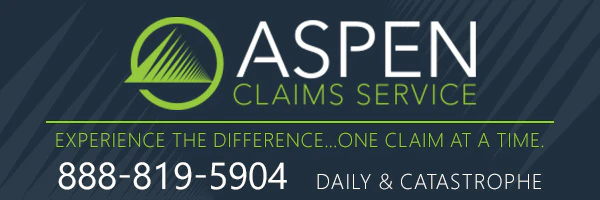
Bridging Cultural Gaps: Insights for Claims Professionals
Sunday, July 9th, 2023 Claims Pages Staff Mastering Relationship Building in the Insurance LandscapeWe live in a world that’s beautifully diverse, a vibrant mosaic of cultures, each with its unique norms, values, and communication styles. As a claims professional, this diversity is an integral part of your daily work. You interact with insureds from different cultures, negotiate with carriers operating under varied cultural norms, and navigate a claims landscape that’s rich in cultural nuances. It’s akin to embarking on a global expedition, exploring diverse cultural landscapes, each with its unique terrain, landmarks, and customs.
In this grand expedition, understanding cultural diversity is your compass. It guides you through distinct cultural landscapes, helping you navigate their unique features and engage with their inhabitants effectively. Without this compass, you might misunderstand certain cultural norms, misinterpret communication styles, or even unknowingly offend your counterparts. But with cultural understanding, one can navigate these landscapes more confidently and foster stronger, more respectful relationships with insureds and carriers alike.
Cultural Landmarks: Communication Styles
Communication styles are like the landmarks of our cultural landscapes. They’re unique to each culture, giving it character and defining how its inhabitants express themselves. For instance, some cultures are high-context, relying heavily on non-verbal cues and shared understanding. In these cultures, a slight nod or a subtle change in tone can convey volumes. On the other hand, low-context cultures rely more on explicit, verbal communication. Here, clarity is key, and messages are often stated directly and in detail.
As a claims professional, you must understand these landmarks and adjust your communication style accordingly. For example, with an insured from a high-context culture, you might need to pay extra attention to non-verbal cues and read between the lines. With a carrier from a low-context culture, you might need to be more explicit, ensuring your message is clear and unambiguous.
Understanding these cultural landmarks allows you to communicate more effectively, respecting cultural norms and ensuring your message is understood as intended.
Cultural Terrain: Norms and Values
Every cultural landscape has its unique terrain, defined by its norms and values. These are the shared beliefs and expectations that guide behavior in a culture, shaping everything from business practices to social etiquette. For instance, some cultures value collectivism, emphasizing group harmony and cooperation. Others value individualism, emphasizing personal achievement and independence.
As a claims professional, understanding this cultural terrain is crucial. It allows you to anticipate how insureds and carriers might react in different situations, tailor your approach to align with their norms and values, and build stronger, more respectful relationships.
For instance, in a collectivist culture, an insured might value a more collaborative approach to claims handling, appreciating your efforts to involve them in the process and maintain group harmony. A carrier from an individualistic culture might value a more direct approach, appreciating your assertiveness and individual accountability.
Navigating the cultural terrain successfully allows you to align with the norms and values of insureds and carriers, fostering relationships that are not just effective, but also culturally respectful.
Cultural Navigation Tools: Cross-Cultural Awareness and Flexibility
Having identified the unique landmarks and terrain of different cultures, it’s time to delve deeper into the tools for successful navigation – cross-cultural awareness and flexibility. These two elements work together, forming the basis of your cultural compass.
Cross-cultural awareness is about understanding and respecting cultural diversity. It involves recognizing that each culture has its unique norms, values, and communication styles, and that these differences are to be respected, not judged. It’s about being open-minded and curious, eager to learn about distinct cultures and their unique features.
Flexibility, on the other hand, is about adapting to these differences. It’s about adjusting your communication style, aligning your approach with cultural norms and values, and being able to shift gears as you navigate different cultural landscapes.
For instance, suppose you’re dealing with a claim involving an insured from a culture that views time differently, where deadlines are seen as flexible and meetings often start late. In this case, cross-cultural awareness would involve recognizing this difference and understanding it’s not a sign of disrespect, but a cultural norm. Flexibility would involve adapting to this norm, perhaps by building some leeway into your schedule or gently reminding about deadlines.
Both cross-cultural awareness and flexibility are crucial tools for successful cultural navigation. They enable you to respect and adapt to cultural diversity, enhancing your relationships with insureds and carriers and improving your effectiveness as a claims professional.
Mapping the Cultural Landscapes: Research and Training
So, how can you cultivate cross-cultural awareness and flexibility? A good starting point is research. Learn about their norms, values, and communication styles. Understand their cultural landmarks and terrain. This research can provide valuable insights, guiding your interactions and helping you navigate their cultural landscapes more confidently.
Training can also be a valuable tool for cultivating cross-cultural awareness and flexibility. Many organizations offer cultural training programs, providing insights into different cultures and offering practical tips for effective cross-cultural communication and collaboration. This training can equip you with the knowledge and skills to navigate unfamiliar cultural landscapes effectively, enhancing your relationships with insureds and carriers.
Remember, cultural understanding is an ongoing journey. Just as the world’s cultures are diverse and evolving, so too is our understanding of them. So, stay curious, keep learning, and keep exploring. With each interaction, each claim, each relationship, you’re embarking on a new leg of your cultural expedition, discovering new landscapes, and building your cultural competence.
Uncovering Cultural Nuances: A Deep Dive into the Practical Applications
Armed with your cultural compass and navigational tools, you’re now better prepared to delve into the practical applications, the real-world scenarios where cultural understanding makes all the difference. It’s one thing to understand cultural diversity theoretically, but applying this understanding in real-world claims situations is where the magic happens.
Speaking their Cultural Language
One of the most common areas where cultural differences come into play is communication. As we’ve discussed, diverse cultures have distinct communication styles. But it’s not just about whether they’re high-context or low-context. It’s also about the cultural connotations of words, the etiquette of conversation, and even the expectations of professional interaction.
For instance, in some cultures, using a person’s first name in a professional setting might be seen as overly familiar and disrespectful. In others, it might be the norm. Similarly, certain phrases or idioms that seem perfectly innocuous in one culture might be confusing or even offensive in another.
So, when communicating with insureds or carriers from unfamiliar cultures, it’s important to understand these nuances and adjust your communication style accordingly. It’s about speaking their cultural language, engaging with them in a way that’s respectful and effective.
Aligning with Cultural Values
Another area where cultural understanding is crucial is in aligning your approach with cultural values. For instance, in cultures that value collectivism and group harmony, you might need to adopt a more collaborative approach to claims handling, involving the insured in decision-making and ensuring all parties are aligned. In contrast, in cultures that value individualism and autonomy, you might need to give the insured more control and autonomy, empowering them to make decisions and take responsibility.
Aligning your approach with cultural values can enhance your relationships with insureds and carriers, demonstrating respect for their culture and fostering a sense of trust and partnership. It can also improve your effectiveness in claims handling, enabling you to work with insureds and carriers more harmoniously and achieve better outcomes.
Recognizing and Respecting Cultural Practices
Beyond communication styles and values, there are also many cultural practices that can impact your interactions with insureds and carriers. For example, in some cultures, business meetings start with some small talk or a shared meal, helping to build rapport and trust. In others, it’s straight to business, with no time for pleasantries.
Recognizing and respecting these practices is another aspect of cultural understanding. It shows that you’re not just aware of their culture, but that you respect it and are willing to engage with it. It fosters a sense of mutual respect and understanding, laying the groundwork for strong, effective relationships.
Overcoming Cultural Misunderstandings: Patience, Empathy, and Active Listening
In your quest to bridge cultural gaps, misunderstandings are inevitable. Maybe a phrase was lost in translation, or a cultural norm was unintentionally violated. In these situations, your response can make all the difference. Being patient, showing empathy, and actively listening are key to diffusing tension and getting the relationship back on track.
Patience is about understanding that miscommunication can occur, especially when different cultural backgrounds are involved. It’s about taking a step back, giving the other party the benefit of the doubt, and making an effort to understand where they’re coming from. It’s about realizing that cultural navigation isn’t always smooth sailing, but that’s okay. It’s part of the journey.
Empathy is about putting yourself in the other person’s shoes, trying to understand their perspective, and responding with kindness and respect. It’s about acknowledging their feelings, validating their experiences, and showing that you care. It’s about building a bridge of understanding, even when the cultural divide seems wide.
Active Listening is about not just hearing, but really understanding what the other person is saying. It’s about paying attention, asking clarifying questions, and confirming your understanding. It’s about demonstrating that you’re engaged, that you value their input, and that you’re committed to understanding their perspective.
These qualities, while valuable in all relationships, become particularly important when dealing with cultural differences. They can help you navigate cultural misunderstandings, build stronger relationships, and become a more effective claims professional.
Conclusion: Embracing Cultural Diversity as an Opportunity
In conclusion, while cultural differences can present challenges in claims handling, they also present an opportunity. An opportunity to learn, to grow, and to develop stronger, more effective relationships with insureds and carriers.
By understanding and respecting cultural diversity, by navigating cultural landscapes with awareness and flexibility, and by applying this understanding in practical ways, you can turn cultural gaps into bridges, enhancing your relationships and your effectiveness as a claims professional.
Remember, the world’s cultures are diverse and evolving, and so is our understanding of them. So, stay curious, keep learning, and keep exploring. The cultural expedition is an ongoing journey, but it’s a journey worth embarking on. With each interaction, each claim, each relationship, you’re not just becoming a more effective claims professional; you’re becoming a more enlightened global citizen, celebrating the diversity that makes our world so beautifully complex.
Whether you’re dealing with a claim involving an insured from a different culture or working with a carrier from another country, remember that cultural understanding is not just about navigating differences. It’s about building bridges, celebrating diversity, and fostering a sense of shared humanity. Because, at the end of the day, that’s what we’re all about - not just resolving claims but building relationships. And what better way to build relationships than through understanding, respect, and mutual appreciation of our diverse and vibrant world? So, keep exploring, keep learning, and keep building bridges. Navigate with curiosity, respect, and open hearts, and see where the journey takes you.
Augment your mastery in the art of relationship building by delving into the other articles within our editorial series. Each piece illuminates a specific aspect, offering valuable insights and actionable tips to strengthen your relationship-building skills. From harnessing emotional intelligence to understanding cultural gaps, from leveraging technology and digital communication to the importance of ethics and transparency, our series addresses the crucial components of forging strong relationships in the insurance industry.

